Bulbs
Flower Basics
Flower Beds & Specialty Gardens
Flower Garden
Garden Furniture
Garden Gnomes
Garden Seeds
Garden Sheds
Garden Statues
Garden Tools & Supplies
Gardening Basics
Green & Organic
Groundcovers & Vines
Growing Annuals
Growing Basil
Growing Beans
Growing Berries
Growing Blueberries
Growing Cactus
Growing Corn
Growing Cotton
Growing Edibles
Growing Flowers
Growing Garlic
Growing Grapes
Growing Grass
Growing Herbs
Growing Jasmine
Growing Mint
Growing Mushrooms
Orchids
Growing Peanuts
Growing Perennials
Growing Plants
Growing Rosemary
Growing Roses
Growing Strawberries
Growing Sunflowers
Growing Thyme
Growing Tomatoes
Growing Tulips
Growing Vegetables
Herb Basics
Herb Garden
Indoor Growing
Landscaping Basics
Landscaping Patios
Landscaping Plants
Landscaping Shrubs
Landscaping Trees
Landscaping Walks & Pathways
Lawn Basics
Lawn Maintenance
Lawn Mowers
Lawn Ornaments
Lawn Planting
Lawn Tools
Outdoor Growing
Overall Landscape Planning
Pests, Weeds & Problems
Plant Basics
Rock Garden
Rose Garden
Shrubs
Soil
Specialty Gardens
Trees
Vegetable Garden
Yard Maintenance
How to Treat Fungus on a Tree
How to Treat Fungus on a Tree. Often troublesome and sometimes deadly, tree fungus complicates the life of many gardeners and arborists. Tree fungus can be managed in order to save the tree. Armed with some common gardening tools, a little fungicide and a good schedule of maintenance, any gardener can keep tree fungus at bay.
Often troublesome and sometimes deadly, tree fungus complicates the life of many gardeners and arborists. Tree fungus can be managed in order to save the tree. Armed with some common gardening tools, a little fungicide and a good schedule of maintenance, any gardener can keep tree fungus at bay.
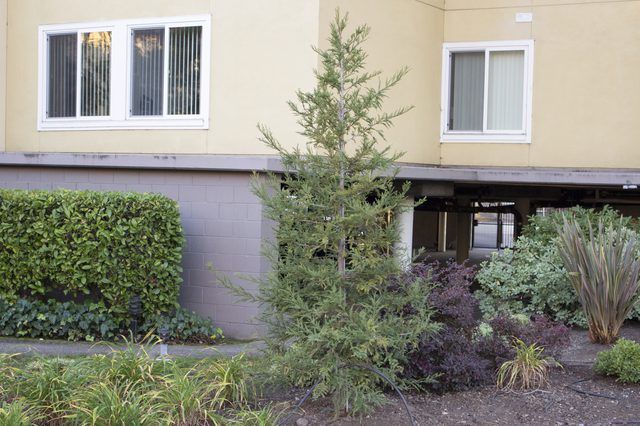
Things You'll Need
Pruning tools
Fungicide
Garden hose
Step 1
Choose the location for planting or transplanting your tree. When dealing with a new tree, small tree or sapling, make sure you choose a well-drained location for planting or transplanting. Boggy or swampy locations breed fungi and make your tree more susceptible to infection. Large trees might be too large to move, in which case fungicide treatment becomes essential.
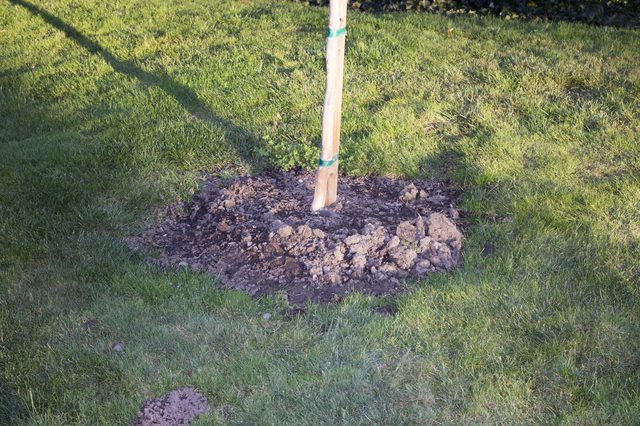
Step 2
Establish a feeding schedule. A well-fed tree is a healthy tree. Fertilizers come in many varieties, including granular, liquid, organic and chemical. Choose the fertilizer that best suits your type of tree, and feed according to the schedule on the packaging. This helps your tree maintain better disease resistance, and provides a less stressful environment.

Step 3
Using your garden hose, water your tree during drought periods. Trees require upwards of 5 gallons of water per day. If you are experiencing a drought, supply the tree with adequate water. This is best done with a spigot attached to a garden hose.

Step 4
Prune your tree in the fall. Using your pruning tools, cut back any dead or broken branches. These are breeding grounds for fungus. Waiting until the fall allows the tree to use its dormant season to heal the pruned areas while providing nutrients to the essential parts of the tree. Because it is dormant, the tree will not grow extra suckers during this period. Treat all pruned stubs with fungicide immediately to avoid any infection.
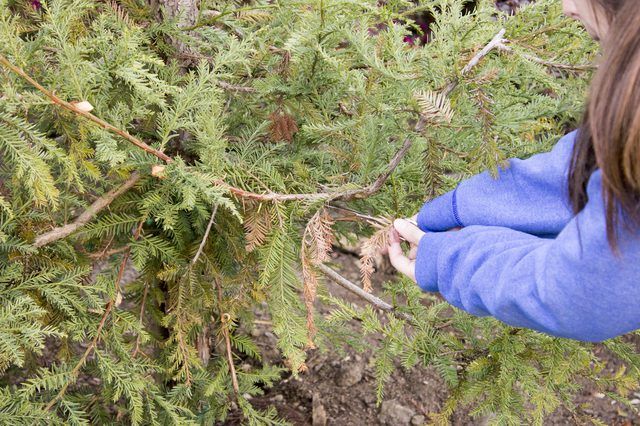
Step 5
Prune sucker branches in the fall. These leech nutrients that should be going to the trunk and main branches of the tree. Try not to prune your tree in the spring because that encourages extra sucker growth. Fall pruning allows the tree to heal, and the dormant period means no new suckers will sprout up. Treat these pruned stubs with fungicide immediately.
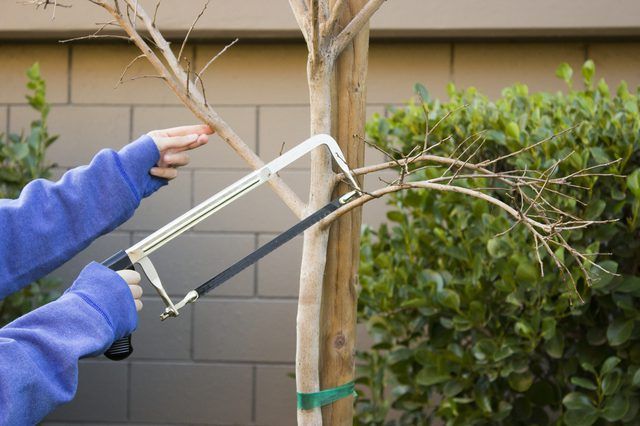
Step 1
Determine what type of fungal infection your tree has contracted. Fungus is classified into the following four categories: Vascular wilt, foliar/shoot, root and butt rot, and canker. Vascular type fungus blocks nutrients from reaching the tree. Symptoms include early leaf drop and wilting. Foliar/shoot type fungus is the most common type of tree fungus. It affects the leaves, leaving spots, and causing mostly aesthetic damage. Root and butt rot kill the roots and trunk of a tree. This type of fungus is mostly a-symptomatic, until the tree is beyond saving. Canker type fungus infections typically happen when a branch is pruned and the stub is left untreated. It leaves a sunken appearance to the surrounding bark. If you cannot identify your type of fungus, or believe you have a highly contagious type of fungus like Dutch elm disease, contact your local Agricultural Department immediately.
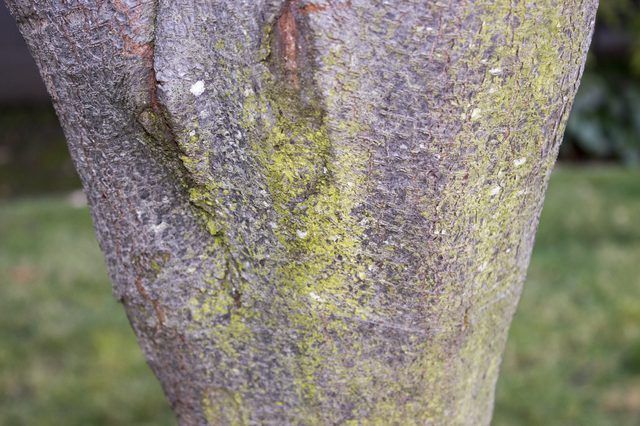
Step 2
Using your pruning tools, prune your tree. When beginning a fungal treatment, remove any broken or dead branches from the tree. Do not remove any suckers until the fall. Treat any cut stub with fungicide. Clean your pruning tools with hot, soapy water or dipping them into fungicide and then rinsing them clean. This will keep the fungus from spreading to other trees. Remove any tree debris away from other healthy trees and burn it or dispose of it where other trees will not be harmed.
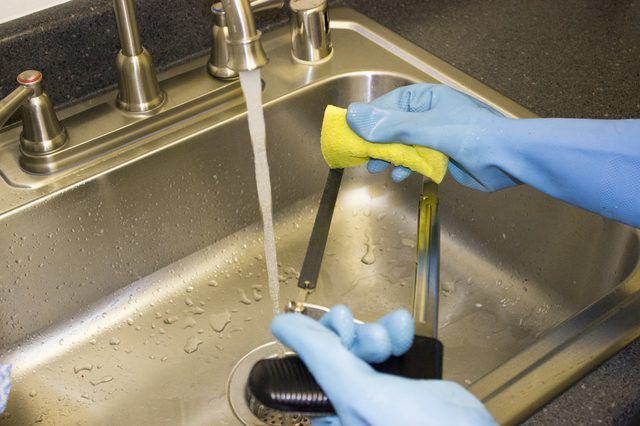
Step 3
Treat the tree with fungicide. Choose a fungicide that treats the type of fungal infection in your tree. Read the directions carefully because some fungicides are applied to the leaves and branches, while others are watered into the roots. Continue to follow the treatment schedule detailed on the package. Skipping a treatment could allow the fungus to regrow, negating all the work you have done.
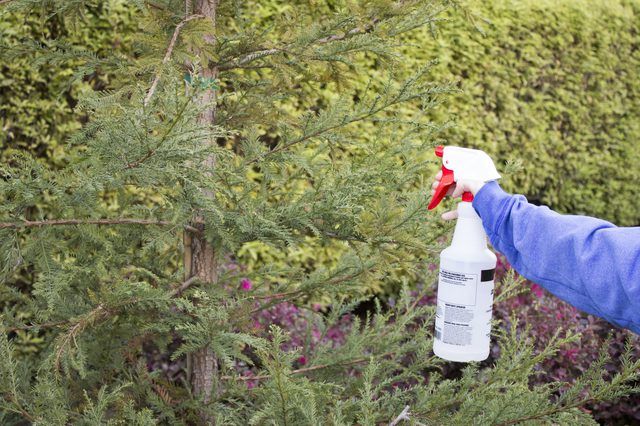
Step 4
Maintain the tree throughout the growing season. Continue to prune dead branches, fertilize and water your tree. Proper nutrition helps keep your tree from succumbing to the infection, and encourages new healthy growth.
